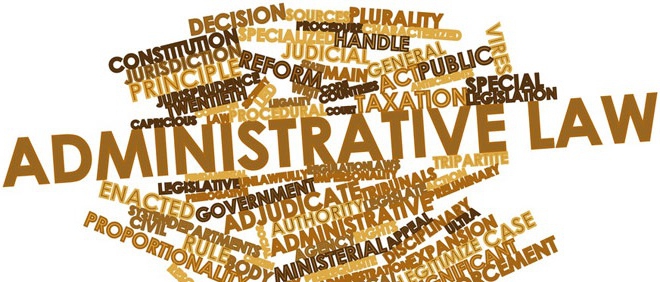A very large group of offenses is misconduct. Unlike crimes, they are characterized by a significantly lower degree of social danger. Acts as a variety of offenses are quite heterogeneous. Based on what sphere of social relations they encroach on, they can be divided into 8 categories.
Typology of misconduct
First of all, this administrative misconduct - a serious offense, which encroaches on the order established by law in society, on relations regarding administrative and executive state activities. It is not related to the performance of specific duties.
It should be clarified that administrative misconduct and an administrative offense are identical concepts. This may include various kinds of violations of a number of traffic rules (driving while intoxicated, exceeding the permissible speed, driving at a forbidding traffic light, etc.), fire safety and sanitary hygiene established at the enterprise, as well as drinking alcohol in public places, stowaways.

Secondly, disciplinary offense - an offense committed within the framework of labor relations and corrupting the normal operation of an enterprise, organization, institution. They weaken labor discipline (military, training, service) and thereby contribute to the disorganization of the work of the company, significantly reduce its effectiveness. So, a disciplinary offense is absenteeism, systematic lateness, violation of regulated technological rules, improper performance of one's job duties, and more.
Examples of such misconduct include being late for service, absenteeism, failure to comply with administrative orders, violation of technological rules, unfair performance of official duties, etc.
Thirdly, material misconduct - this is an offense also in the field of labor relations, but already related to harm to a specific organization (in which the offender directly serves). This includes damage to material assets, their shortage, improper storage, etc.
Fourth, misconduct - this is an offense that is committed in the field of property, non-property relations, representing for a person a certain spiritual value (dignity, authorship, honor), and which is protected by civil law. It is expressed in the form of moral or material damage caused either to individual citizens or organizations (dissemination of information that defames the dignity and honor of a citizen, failure to fulfill established contractual obligations, etc.).

Fifthly, financial misconduct - this is an offense relating to the collection, distribution of material state resources (violation of the formation of financial statements, tax evasion, non-compliance with the established rules regarding the conduct of cash operations, etc.).
At sixth, family misconduct - This is an offense within the framework of marriage and family relations (refusal to raise, support children, nonfulfillment of conjugal duties, etc.).
Seventh, constitutional misconduct - a violation, which is expressed, in particular, in the adoption by state bodies of regulatory acts that are contrary to the Constitution.
The eighth type is misconduct - violation of the procedure for administering justice established by law, passing a case (legal) in a law enforcement body (failure to appear of a witness summoned by an investigator, prosecutor, judge, followed by a fine or failure to appear of a defendant in a courthouse with a subsequent change in a preventive measure - for example, by replacing recognizance not to leave to arrest).
The concept of administrative misconduct
According to the Russian Code of Administrative Offenses, it is treated as a guilty unlawful act (inaction) of an individual or legal entity for which administrative responsibility is assumed.
An administrative offense is the application by state bodies of various kinds of administrative law of administrative responsibility for violation of certain regulatory requirements of the Administrative Offenses Code of Russia.
The composition of the offense
It is worth noting that the result of the unlawful act is adverse consequences in relation to the subject of this right or personal property (non-property) freedoms, the rights of the individual, society, and the state.
The administrative misconduct includes:
- Subject (legal entity and individual).
- Object (social relations that are regulated by legal norms and are protected by administrative penalties and aimed at administrative misconduct).
- The objective side of this tort (action or inaction that is prohibited by the norms of administrative or other law and for which administrative responsibility is provided).
- The subjective side of the offense in question (mental attitude of the person who committed an administrative offense to this unlawful act, its consequences).

These elements are required for a complete offense. This is what is significant when considering specific competent authorities of a number of cases that arise from the considered type of offenses.
Characteristics of the considered form of offense
The following signs of administrative misconduct are distinguished:
- He must be unlawful (violate individual or a number of requirements that are established by the sources of this right). For example, this may be a violation of the laws of the subjects of Russia in the field of administrative law, the provisions of the Constitution regarding the area under consideration, job descriptions, as well as power directives.
- An act in the form of an unlawful action or inaction of a particular subject of the relevant right should be worn specifically guilty nature (violation of generally accepted legal norms, and sometimes ethical). For example, a violation of a number of traffic rules in the form of the deliberate establishment of false license plates. An example of inaction can be a failure by an official of a bank to monitor the correct implementation by companies (their associations) of cash transactions.
- Must be present public danger (threat of violation of social relations protected by the relevant administrative legislation). For example, a citizen violated the well-known rule of the road by crossing the road in the wrong place, but at that time repair work was carried out on the carriageway (there was a ban on the movement of vehicles). In this regard, the act of a citizen was not of the nature of a threat to traffic safety on the road (this symptom is absent, therefore this is not an administrative offense).
- For each administrative offense administrative liability is provided (punishability).
Administrative Offense and Disciplinary Offense: Distinctive Features
According to general rules, the latter is mediated by labor relations. Quite often, a violation of their respective duties is simultaneously regarded as an administrative offense. This kind of tort was called administrative disciplinary.
The difference between an administrative offense and a misconduct in a disciplinary offense lies in the nature of the social relations that the illegal act is aimed at. So, disciplinary offenses are focused on the discord of the internal routine (labor), which is established in the relevant organization, and also on labor (military, service) discipline. According to the above rule, these social relations are not the subject of an administrative offense.

As mentioned earlier, this kind of misconduct is a failure to perform official duties by an employee of a particular enterprise. In addition, it entails directly disciplinary liability, expressed in the form of disciplinary sanctions, which are significantly different from penalties imposed for an administrative offense on the grounds such as:
- the nature of the content of decisions (legal restrictions);
- regulatory procedure;
- legal consequences of the application;
- the circle of subjects authorized to use them.
Administrative responsibility: concept, basis, features
This is the most important institution of administrative law. This kind of punishment for a perfect administrative misconduct is prescribed in various regulations. Thus, the legislator establishes administrative responsibility for a specific unlawful act, thereby recognizing the social harmfulness of a given act, and sometimes its social danger. He gives a legal assessment and condemns this illegal act together with the person who committed it.
If we consider the relationship of such concepts as administrative misconduct and administrative responsibility, then we can say with confidence that the second is a consequence of the first. This is a legal concept, the essence of which is established by administrative law. Administrative responsibility as a type of legal one is one of the methods of public administration, which is associated with the compulsory creation of order and regulation.
Administrative responsibility for administrative misconduct is both property in nature (compensation, fines, etc.) and non-property (administrative arrest, warning, etc.).

Its main features:
- She is the result of a guilty act.
- Administrative responsibility for administrative misconduct is protective in nature (law enforcement).
- It is accompanied by public and state conviction of the offender committed by the subject of the act.
- This kind of responsibility is normatively defined (the essence is the establishment and subsequent application of sanctions of existing legal norms).
- It involves the use of a set of coercive measures against the offender.
- Its implementation is carried out in the established procedural form.
Administrative Offense and Crime: Distinctive Features
According to Russian law, there are several types of offenses: disciplinary and administrative offenses, crimes, civil tort. In this regard, a variety of species legal activity. The most severe is criminal (the commission of unlawful acts representing a social danger). But still, most of the legal prohibitions and prescriptions are not so significant as to bring people to criminal liability. That is why administrative responsibility has been introduced (usually applied by government or solely by a judge, does not entail a criminal record).
Crime and administrative misconduct have a significant material criterion for delineation - social danger, which expresses the social and legal difference between the first concept and the second and other tort. She, as a systemic complex socio-legal category, expresses the exceptional quality of a malicious act that violates or threatens the conditions for the existence of society, identifying the most dangerous type of offense - a crime.
Social danger is determined by all the known elements that make up the crime, but to a significant extent - signs of the objective side.
Classification of the concept under consideration
It is customary to distinguish several groups of these offenses, which include the following types of administrative offenses:
1. Administrative Torts against personality, namely:
- voting rights (unauthorized interference in the activities of the election commission);
- labor rights (dismissal of employees due to a strike);
- minors (parents' failure to fulfill the established obligations regarding the upbringing of the child);
- morality (disrespect for the elderly);
- religion (an insult to civil religious feelings);
- social rights (refusal to hire a person with disabilities within the established quota);
- health (drug use);
- property (petty theft).
2. Administrative misconduct (examples below) against social lifeMore precisely, in the following areas:
- industry (non-compliance with industrial safety standards);
- energy (damage to power networks);
- transport (stowaway);
- communication and information (damage to telephone boxes);
- public order (petty hooliganism);
- ecology (unauthorized felling of trees);
- construction (construction of buildings without a permit);
- agriculture (non-compliance with the list of rules and norms for the control of harmful plants);
- traffic (speeding);
- securities market (non-observance of the register maintenance procedure);
- public safety (shooting from a firearm within the boundaries of a settlement).
3. Torts under consideration against the state, namely against:
- state property (non-observance of norms of exploitation of cultural objects);
- finance (non-compliance with the rules of the procedure for conducting cash transactions);
- customs (unauthorized import of goods);
- protection of the state border (unauthorized crossing of the Russian border);
- entrepreneurial activity (opening a business without permission);
- taxes (violation of the terms and procedure for filing a declaration);
- state power (failure to comply with the instructions of a judge);
- management procedure (accommodation without proper registration).
Administrative law: concept, signs
This is a system of legal norms that regulates social relations that are formed in the course of the implementation of the functions and tasks of state authorities, local self-government in the process of performing executive and administrative work, as well as internal company relations.
Administrative law has the following features:
- It is the fundamental branch of public law.
- This right is a set of legal norms.
- It is equipped with a separate subject of legal regulation - managerial relations that appear in the public sphere and in another area.
- The industry in question has a special method of regulation in the field of rights.
- It is equipped with internal consistency and consists of a combination of elements.
- This right has a visual expression (fixed in the corresponding source forms).

A kind of administrative punishment
As mentioned earlier, all administrative offenses (examples of which are given above based on their varieties) are subjected to a corresponding unpleasant measure of impact.
There are the following types of punishments (administrative):
- warning (a penalty having a moral content, which is executed in writing or in a form other than oral);
- reimbursable seizure of an object (instrument) of an administrative offense (forced expropriation and its subsequent sale with the return of the remaining amount of money to the owner after deduction of associated costs);
- deprivation of a special right granted to an individual, for example, the right to hunt, drive a motor vehicle (for up to 3 years in a situation of gross or systematic violation);
- administrative expulsion of a foreigner (a person without appropriate citizenship) from Russia;
- administrative suspension of activities (either final or up to six months);
- a fine (pecuniary punishment that is imposed for an administrative offense in the amount established by Russian law);
- confiscation of the subject (instrument) of an administrative offense (forced gratuitous alienation to state property);
- administrative arrest (for up to 15 days and only in special cases and with the exception of a group of persons: pregnant or having children under 12 years of age, minors, disabled people of groups 1, 2);
- disqualification (administrative penalty and compulsory treatment of patients with alcoholism, toxic and drug addiction, evading voluntary hospitalization, which therefore posed a threat to public order).
So, it has already become clear that administrative responsibility has an extensive supply of administrative coercive measures that are very specific and distinguish it from other forms of legal responsibility (criminal, civil, labor, etc.). In addition, it is of a public nature, suppresses exclusively administrative tort and combines both personal and property responsibility.
The commission by a person of this type of offense is the legal basis for the use of measures of the liability under consideration. The legislator has a large supply of them. Each of the measures is characterized by a complex of exceptional advantages over other species, as well as restrictive capabilities.
Achieving the relevant goals is available only in the situation when a specific measure of responsibility is applied to a particular case, corresponding to the committed unlawful act, the damage caused to them. This can be realized only on condition of strict observance of the law, basic principles of using measures of this kind of responsibility, namely:
- the legality of applying these measures (their strict compliance with the law);
- justice punishment;
- the feasibility of bringing to this kind of responsibility a specific person;
- proportionality (compliance of the committed act and responsibility for it).
Finally, it is worth recalling that offenses are divided into crimes and misconduct (disciplinary, administrative, etc.).








